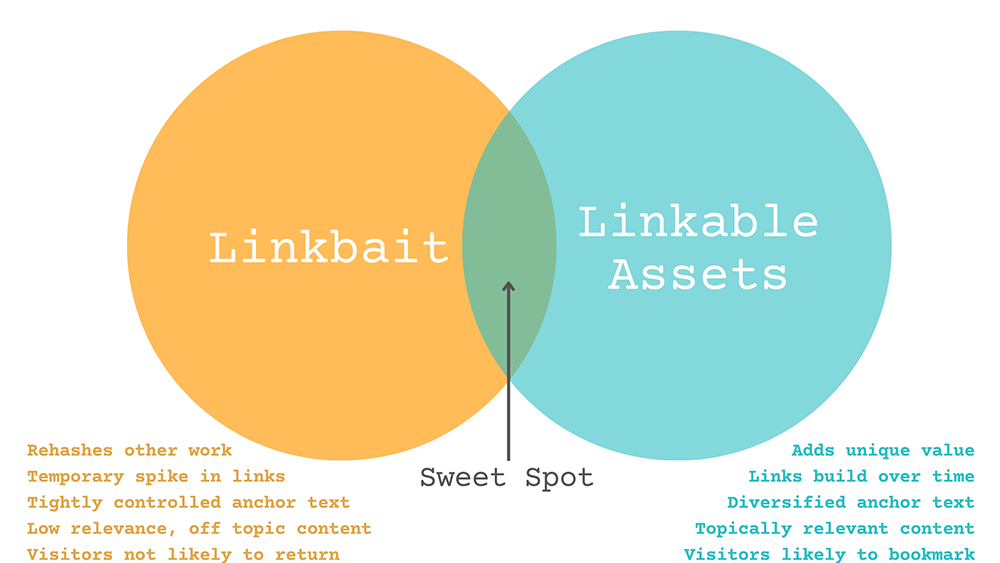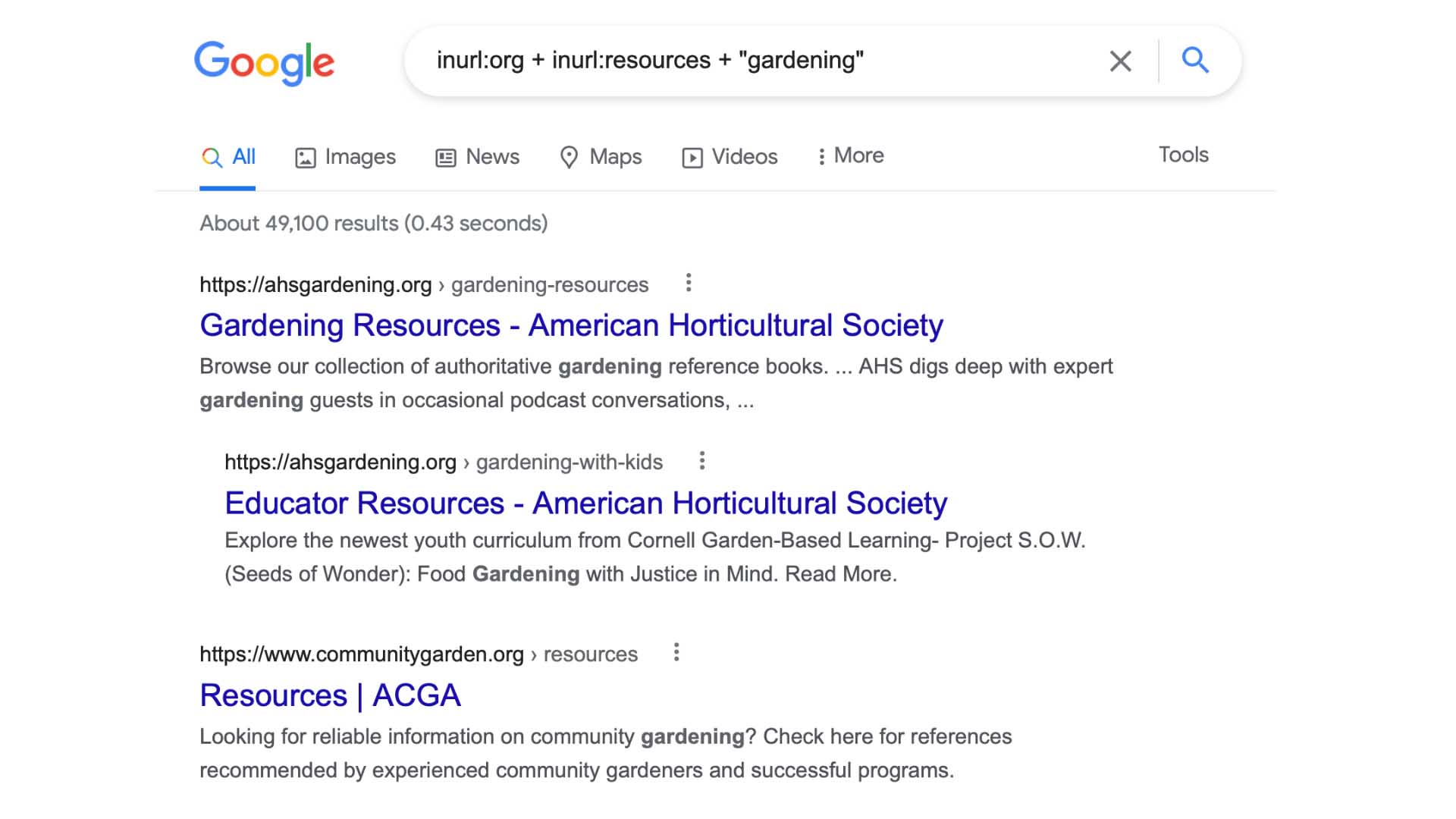Link building strategies and prospecting for opportunities
This is part three of our three-part series of Developing a successful link building campaign. Part two: Finding high-quality links and authoritativeness covered determining the best type of links, why link relevancy matters for SEO, and provided several authority tools for link building. The goal of this series is to help expand your link-building knowledge and to cover the basics for creating a robust link building campaign.
Now that parts one and two covered the basics, it’s time to dive into tactics for developing a successful link-building campaign. Let’s get started!
How to start a link building campaign
The most important part of link building is building out your strategy and allocating time across various tactics (when we say ‘tactics’ we are referring to the various processes of securing links). We like to call this “Three Steps for Link Success”. A link building campaign is centered around three main factors:
- A linkable asset: This is the page you want a webmaster to link to on your website. There are many types of linkable assets, and it depends on your strategy regarding which asset you pitch to a website. For example, if a site’s primary focus is on selling a financial product, the homepage could become a linkable asset for people looking for that specific financial product. In most cases, the linkable asset is a piece of content or a particular page on a site.
Pro tip: Consider creating a linkable asset to use as part of your strategy. This will allow you to create a piece that’s perfectly catered to your approach. Start by looking at a competitor’s backlink profile to find a common theme around what type of content they have that is getting backlinks on a large number of domains. From there, create a piece of content that is more compelling to pitch to the same type of sites that said competitor was earning backlinks from. - A prospecting strategy: Prospecting is the practice of finding the right website and person to reach out to. For any link building campaign, it is important to know what type of website or page you are looking for. For example, if you are trying to pitch a linkable asset about flowers as a resource, your prospecting strategy will likely focus on flower groups with “resource” pages.
Pro tip: Use different search parameters when looking for prospecting opportunities to find more relevant prospects to reach out to. Some of our favorites are:
– Inurl: X this tells Google to only bring up results that have X in the URL (ex: inurl:resource)
– Intext: X this tells Google to only bring up results that have X somewhere in the text of the article (ex: intext:flower delivery)
– Site: X this tells Google to only bring up results from a specific website (ex: site:dept.com)
-X: this tells Google to NOT include anything that discusses X (ex: -planting) - An email pitch and follow-up cadence: A link building campaign is only as good as the pitch. Without a clear pitch, the webmaster will not know what to do. Follow-ups are a link builder’s friend.
Pro Tip: If you find a spelling or grammatical error in the article you are reaching out about, let the webmaster know in the email pitch. Since they will have to update the page regardless, there is a higher chance they will decide to add your link.
Linkable assets
Let’s start with linkable assets. As mentioned above, a linkable asset is something that you are planning to pitch out to a webmaster. Linkable assets need to have a specific set of criteria to be successful.

First, the linkable asset should not be overly promotional. This is especially true with pitching a specific piece of content. Any piece promoting a service will be viewed as an ad and will likely result in the webmaster asking for money or directing you to their advertising department. The exception here is the homepage as a linkable asset. Taking the same example as above, a financial product website will serve as a resource for a list of sites with that specific financial product. Let’s look at an example of the homepage being a linkable asset from Guided Choice:

Guided Choice’s homepage would be the linkable asset for any pages talking about companies that have the above financial products.
Second, the linkable asset should provide value to someone learning about that topic. Creating truly valuable and compelling content is difficult. However, link builders must either find a page worth sharing or create a value proposition demonstrating a piece’s merit to the target webmaster.
They have a portable travel crib that is pretty awesome. However, in the eyes of a webmaster, this crib is probably similar to other travel cribs on the market. This page may even be seen as too promotional because it directly tries to sell the product.
In comes the value proposition. Any page can become a linkable asset if the value proposition fits the target website. What makes a page a helpful resource from a parent’s perspective?
- Portability
- Non-toxic
- Free trial
- Certified
We must position the piece to show it is better or more unique than the competition. If we take the non-toxic route, we can look for people writing about non-toxic products for their children. There are likely groups that have resources we can pitch to. We could potentially create a campaign out of this. We would then need to prospect for link-building opportunities.
Prospecting for opportunities
As mentioned above, prospecting is the art of finding opportunities. I say “art” because it really is the toughest part of link building. At DEPT® , our prospecting is not complete until we have the right page, the right contact, and the right pitch.
The right target page for a backlink
Where should our asset go on the target domain? This is the tricky part. If we want to scale our link-building operation, we need a way to quickly find the right pages where our link could go.
Queue the data analysis…
We know that pitching as a resource (one type of tactic) successfully converts at between 0.5-1%. So, if our goal is to get 5 links from this tactic, we will need to email between 500-750 contacts. This could take a very, very long time if we search the web without any direction.
The direction comes from finding patterns in the types of pages or websites we want to get links from. Let’s say we want to find all of the flower websites that have resource pages. We would first use Google’s advanced search operators. (Google search operators will become your best friend).
In this example, we start with organizations (.orgs) because .org domains are generally strong. You’ll want to avoid pitching to other flower companies. After all, why would a flower company link to a competitor’s resource?
My first search would be something like this:
- Inurl:.org “Flower Resources”
After I get a sense of the types of organizations that have flower resource pages, I can find patterns in the URLs. Do they use /resources, /links, /helpful-resources, etc?
Pro tip: Make sure the resource pages have outgoing nofollow links. If a website is only linking to its own material or uses nofollow tags, the chances of them adding your link without a nofollow tag are very slim.
Next, I would add additional search operators to find other opportunities:
- Inurl:.org + inurl:resources + “gardening

This will give me most (if not all) .org websites that have the word “resources” in the URL and the word “gardening” somewhere on the page. From here I could make any number of searches to get different results and find patterns in the types of pages/URLs I am looking for.
Pro tip: The Mozbar tool will allow you to pull the top 100 results into an excel sheet for faster prospecting. This will include DA, URL, and Title. Scrape box is another excellent tool to quickly complete multiple searches at once. We have a great Scrapebox tutorial for further reading.
Further Reading on Advanced Search Operators:
Ahrefs & other link finding tools
Another great way to prospect is by letting someone else do the work for you. Ahrefs’ Site Explorer is one of our favorite tools for discovering which sites are linking to a specific domain or page.
The easiest way to do this is to take your competition’s URL and toss it into the site explorer. Let’s take the example of “laptop deals”. Say HP’s Laptops Deals Page is looking to compete with Best Buy (currently ranking #2 for the term “Laptop deals”).
All I have to do is comb through this list and see if there are any pages where HP (or anyone else) can secure a feature as well! Ahrefs also has a great tool called Link Intersect where you can compare the backlink profile from several domains to identify easy opportunities. Semrush has a link building tool as well, simply enter the domain you are trying to build links to and the tool will generate a list of prospects.
Here is a list of other link building tools and their best features. Pro Tip: Combine the search operators and the Ahrefs linking tool while prospecting. For example, once you find a useful resource page, check the backlink profile of those links to see if there are other pages your asset could secure a feature from.
After finding the right page to ask for a link from, the next step is finding the right contact.
The right contact
After the target page, the second most important piece of information is the right contact person. Ask yourself: Who should we contact and ask for a link from?
The right contact is crucial because it can significantly speed up or slow down your link building campaign. Let’s say we’re targeting a university and wanted to reach out about a resource for their students. Hitting up the [email protected] will likely result in some admin in the general office that doesn’t care about a specific resource page. Instead, we will want to find the department that runs that part of the website and the person that is in charge of it. If we can’t find the right person, we should email someone in that specific department to find the right contact.
On the other hand, if we are reaching out to a general blog that is only operated by a few individuals an [email protected] email address is probably the right email to start with. Remember: Finding the right contact is highly dependent on the target website.
Pro tip: Never email anyone in an advertising or sales department. It will only lead to them asking for money.
What are the link building techniques?
Link building is all about leveraging the right tactics. There are a lot of tactics that require unique strategies. However, for the purpose of this article, I will highlight the best link-building tactics that most websites can use.
Top link building tactics
- Unlinked brand mention: This consists of finding current mentions of a company or website without a hyperlink and asking for a link to a relevant page. Google’s SERP and Ahrefs’ Content Explorer are great places to start. Google alerts will also allow you to set up email notifications every time a specific brand is mentioned across the web.
- HARO: This is a tool for reporters that are looking for a source for an article. Respond with high-level quotes the reporter can use in their article. This usually results in a link back to the source’s website. HARO’s are highly competitive, so it’s important that the person you are providing a quote on behalf of is highly authoritative and that the quality of your quote is A+. Pro Tip: Make sure every sentence is quotable. Most of the time, if your quote is featured the journalist will only use some of the quote you submitted. By ensuring that every line is quotable and can stand alone you will increase the likelihood of your quote being featured.
- Pitching as a resource: This consists of finding web pages that could benefit from a resource on your website. While this is a lower converting tactic (0.50% – 1.00% CVR), it is a tactic that yields some of the highest-quality and relevant links. Remember to only reach out to articles or resource pages where our target page would be adding value and demonstrate that value in your email pitch to the webmaster.
- Guest posting: This is the process of submitting a post that is either written by your company (Byline) or features several examples with source links. This is a resource intensive process and includes article briefing & editing. If you plan to utilize this approach, make sure you are doing so in a way that will add value.
- Broken links: This is the process of fixing old links that are pointing to 404 pages or finding 404 links pointing to our competition and getting the link switched to our resource. This approach also works for soft 404’s, like sold-out product pages.
- Link jacking: This is the process of finding a competitor resource and identifying people linking to that resource. You would then email those websites letting them know about our client’s better, more user-friendly resource. A great, non-threatening way to leverage this tactic is to ask to be added in addition, rather than to swap out the competitor’s link.
- Discounts: Offering a discount to colleges and other organizations on pages with a link to where the discount is used.
- Ego bait: This approach consists of asking for quotes or highlighting people in a resource or content piece and then asking those websites to link to the piece in their “press” pages or other pages on their site.
- Link sculpting or reclamation: This approach identifies pages on your site that have backlinks pointing to them but lack value from an SEO perspective. Identify 3rd party sites linking to these pages and reach out to request an update to a more relevant page for your SEO strategy. Examples of low-value SEO pages are About Us, FAQs, Meet the Company, etc. These are considered low SEO pages because they don’t have the potential to rank for any revenue-driving keywords.
There you have it—a guide to link building. No links are easy to build, it’s challenging work, but if you follow these steps, you’ll see linking conversions in no time. Remember, quality over quantity – spend time utilizing tactics that will be the most fruitful for your authority building goals.
Need help in getting your link-building campaign off the ground? Feel free to get in touch with us! We would love to create a tailored content plan around your goals and objectives to set you up for success.
Learn more about our SEO offering
Explore
More Insights?
View All InsightsQuestions?





